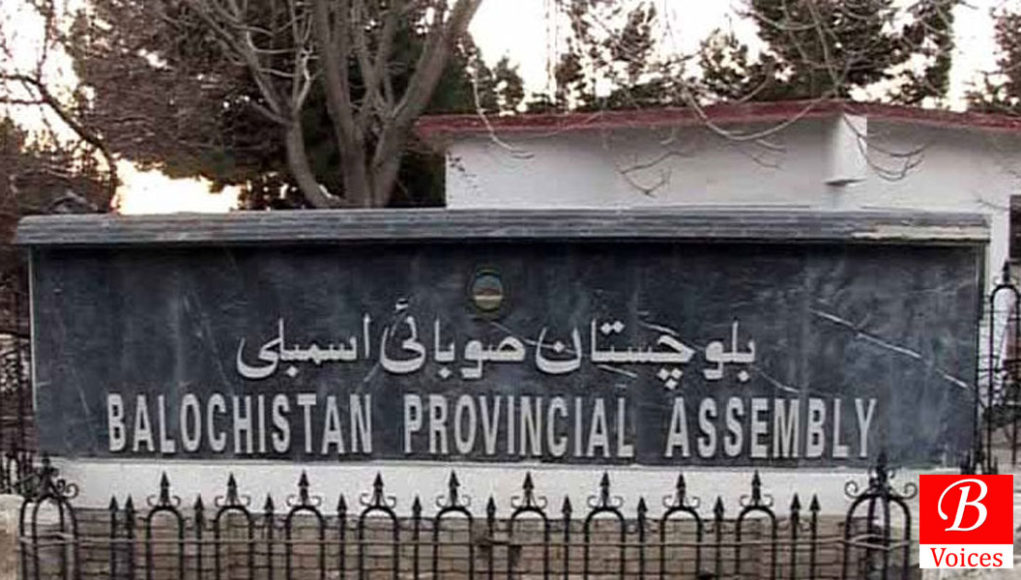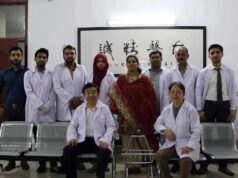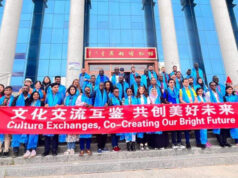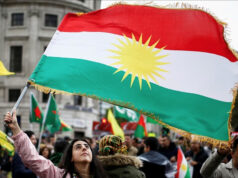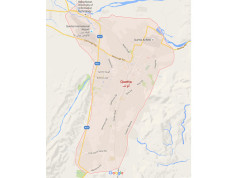Rehmat Ullah
It is often clichéd that Balochistan is the largest in terms of geography and natural resource rich with having the thinnest population province of Pakistan. Nonetheless, the province is the most underdeveloped in the region. Thereby its politics and grievances always echo from Balochistan Assembly. Let’s have a glance over historical background of the Balochistan Assembly building.
The Assembly came into existence under a presidential order after Balochistan attained status of province in 1972. The assembly hitherto had not its own building at that time. Before construction of the existing Balochistan Assembly building, its first session was held in Shahi Jirga Hall which is now Quetta Metropolitan Corporation and City District Council. Proceedings and sessions of the assembly continued to be held till April 28, 1987 in the Shahi Jirga Hall.
Nawab Akbar Khan Bugti approved the construction of separate assembly building in 1973 when he was governor Balochistan. Nawab Akbar Khan Bugti himself proposed and finalized the architectural design of the new assembly building. The building of supreme house of the province mirrors beautiful tent-shaped which also reflects rich culture and tradition of the province.
The assembly building covers 65,400 square feet situated opposite Balochistan high court in cantonment area on Zarghoon Road. The then president and martial law administrator General Zia-ul-Haq laid its foundation stone. Ex-prime minister Muhammad Khan Junejo inaugurated the assembly building on April 28, 1987. It was completed at a cost of Rs. 50.2 million.
There were only 21 seats for members in Shahi Jirga Hall while 72 seats have been set up for members in existing assembly building. There were a total of 20 members of the provincial assembly-MPA in 1972. In 2002, the number of members was increased to 51 general seats and 14 reserved seats including 11 for women and three for minorities (total 65 seats which is still intact). A total of 25 seats are reserved for guests in joint gallery of speaker, members and leader of the house. In addition, separate arrangement of 25 seats are put in place for senior officials of the provincial government for attending the assembly proceedings to assist their respective ministers and members in answering questions related to their administrative departments. As many as 168 seats are set up for general and visiting guests. When assembly in its session, sitting arrangements are made for students not only from Balochistan but also those students from across the country who visit Quetta on study tour witness proceedings of the house are adjusted against these seats. In order to facilitate journalists for coverage of the assembly proceedings, 65 seats are made for them called as ‘press gallery’ in the building. In 2008, separate ‘press media center’ has been set up by Balochistan government in collaboration with USAID.
Offices for ministers have been set up in the assembly building and separate chambers for speaker, deputy speaker and opposition leader are also located in the building. Assembly’s library is set up in the same premises.
Former governor Balochistan Justice (retd.) Amir-ul-Mulk Mengal inaugurated the new separate administrative block of the building in the premises of the assembly in October 2002. The new block is named as ‘assembly secretariat’. The block consists of 76 rooms and a conference hall with the capacity of accommodating 60 persons. Reporting room, committee room, research center, printing, editing, and accounts offices are also located in the secretariat block.
There is a library in which over 10,000 books including English, Urdu and in local languages on different topics are kept for studying for members. A mosque, inaugurated by general Zia-ul-Haq on June 28, 1987, is situated between the assembly building and MPA Hostel facilitating for offering prayers. There are three lawns on the premises of the building where flowers and trees are planted add to the beauty of the building.
Located at heart of the provincial metropolis, the building is the symbol of Quetta city as visitors from remote districts of Balochistan are often seen taking photographs in front of the iconic structure. When the assembly is in session it is generally witnessed the main Zarghoon Road leading to the assembly is blocked due to protesters of different associations, unions, parties, and people belonging to various walks of life organize demonstrations for getting their demands fulfilled.
The writer is a former policy development officer and member research committee of NACTA. He can be reached at [email protected].
Disclaimer: Views expressed in this article are those of the author and Balochistan Voices not necessarily agrees with them.
Share your comments!


